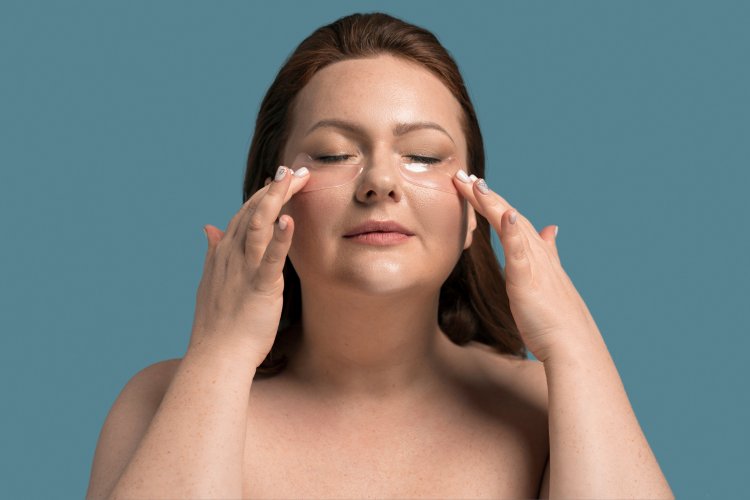Why You Have Dark Circles and How to Get Rid of Them
Dark circles under the eyes, also known as periorbital dark circles, are areas where the skin appears darker than the surrounding facial skin. They can affect anyone and can be influenced by various factors, including genetics, lifestyle, and underlying health conditions.

Dark Circles Under Eyes
Who Gets Dark Circles?
Dark circles can be seen in people of all ages and ethnicities, but certain groups are more susceptible due to specific risk factors.
Risk Factors:
- Age: As people age, the skin around the eyes becomes thinner and loses collagen, making the blood vessels underneath more visible.
- Genetics: A family history of dark circles can make you more prone to developing them.
- Skin Type: People with fair or thin skin may find dark circles more noticeable.
- Lifestyle: Factors such as lack of sleep, poor diet, stress, and excessive sun exposure can all contribute to dark circles.
- Ethnicity: Individuals with darker skin tones (e.g., African, Asian, and Hispanic descent) may have higher levels of pigmentation around the eyes.
Causes of Dark Circles
The causes of dark circles can be multifaceted, often involving a combination of lifestyle, genetic, and environmental factors:
- Lack of Sleep: Inadequate sleep can cause the skin to become pale, which makes blood vessels and dark tissues beneath the skin more noticeable.
- Dehydration: When the body is dehydrated, the skin under the eyes can look dull and sunken.
- Allergies: Allergies can cause itching and rubbing of the eyes, leading to dark circles.
- Genetics: Genetic predisposition can lead to the development of dark circles. Conditions like periorbital hyperpigmentation are often inherited.
- Sun Exposure: Sun exposure can increase the production of melanin (the pigment that gives skin its color), leading to darkening of the skin under the eyes.
- Iron Deficiency: Low levels of iron can result in poor oxygenation of body tissues, which can cause a bluish tint under the eyes.
- Aging: The natural aging process leads to loss of fat and collagen, thinning the skin around the eyes and making dark circles more prominent.
How to Reduce Dark Circles
Reducing the appearance of dark circles can often be achieved through lifestyle changes and home remedies. Here are some strategies:
- Adequate Sleep: Aim for 7-9 hours of sleep per night to prevent the skin from looking pale and dull.
- Hydration: Drink plenty of water to keep the skin hydrated and healthy.
- Healthy Diet: Consuming a diet rich in vitamins (particularly vitamin K, C, and E) and iron can help improve skin health.
- Cold Compress: Applying a cold compress can constrict blood vessels and reduce puffiness and dark circles.
- Elevated Sleep Position: Sleeping with your head elevated can prevent fluids from pooling under your eyes.
- Sun Protection: Use sunscreen and wear sunglasses to protect the delicate skin around your eyes from sun damage.
Treatment Options for Dark Circles
For more persistent or severe dark circles, various treatment options are available:
- Topical Treatments: Creams containing ingredients such as retinol, vitamin C, caffeine, and hyaluronic acid can help reduce pigmentation and improve skin texture. These products often work by boosting collagen production, reducing inflammation, and promoting skin repair.
- Chemical Peels: Peels with alpha-hydroxy acids (AHAs) and beta-hydroxy acids (BHAs) can help lighten hyperpigmentation by exfoliating the top layers of skin.
- Laser Therapy: Laser treatments, such as fractional laser or intense pulsed light (IPL), can reduce pigmentation and stimulate collagen production, leading to thicker, healthier skin.
- Fillers: Dermal fillers like hyaluronic acid can be injected into the tear troughs to add volume, reducing the appearance of dark circles and hollows under the eyes.
- Microneedling: This procedure involves tiny needles that puncture the skin to stimulate collagen production and improve skin texture and firmness.
- Platelet-Rich Plasma (PRP) Therapy: PRP involves injecting your own blood plasma, which is rich in growth factors, into the skin to promote healing and regeneration.
- Blepharoplasty: In severe cases, surgical procedures such as lower eyelid blepharoplasty can remove excess fat and skin around the eyes, providing a more permanent solution to dark circles.
Dark circles under the eyes are a common cosmetic concern with various underlying causes. By understanding the risk factors and potential causes, individuals can take steps to manage and reduce their appearance. Lifestyle changes, home remedies, and professional treatments can all contribute to minimizing dark circles, leading to a fresher and more youthful appearance. Each person's situation is unique, so consulting with a healthcare professional or dermatologist is advisable to determine the most effective treatment plan.
#darkcircles #undereyecircles #beauty #skincare #health
Disclaimer: The information provided in this article is for educational purposes only and should not be considered medical advice. If you have any health concerns or are experiencing symptoms, it is important to consult with a healthcare professional, such as a doctor or clinic,
What's Your Reaction?





















